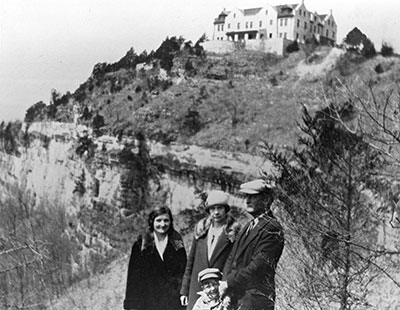Celebrating 100 Years of Missouri State Parks
1917-2017
Missouri State Parks and Historic Sites –
From a Simple Idea to One of the Top State Park Systems in the Nation
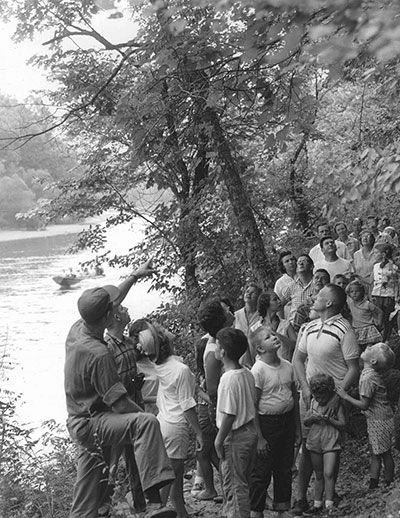 Missouri State Parks is celebrating 100 years of protecting and interpreting Missouri’s exceptional natural and cultural resources while providing outstanding recreational opportunities.Throughout the system’s 100-year history, citizen support has been key to the success of the park system.
Missouri State Parks is celebrating 100 years of protecting and interpreting Missouri’s exceptional natural and cultural resources while providing outstanding recreational opportunities.Throughout the system’s 100-year history, citizen support has been key to the success of the park system.
Early Beginnings
Public discussions that led to the establishment of Missouri’s state park system began around the turn of the century. After encouragement from many citizens, state legislators introduced a bill in the Missouri General Assembly in 1907 that would establish a state park system. Although the bill did not pass, interest continued.
In 1916, the National Park Service was created to administer national sites, and it promised guidance and assistance in helping establish state park systems.
The Birth of the State Park System
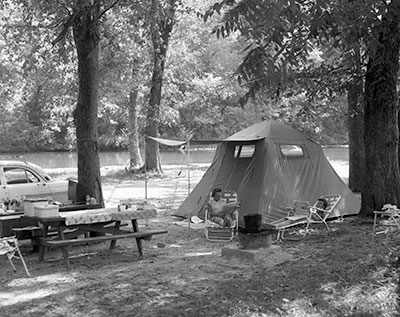 On April 9, 1917, the state park fund was officially created, using revenue from the fish and game department. With the fund established, the fish and game department became responsible for the parks once they were acquired.
On April 9, 1917, the state park fund was officially created, using revenue from the fish and game department. With the fund established, the fish and game department became responsible for the parks once they were acquired.
In 1923, the state acquired the historic Arrow Rock Tavern, and 1924, the first state park tracts were secured. On Oct. 17, 1924, Big Spring State Park became the first Missouri state park. That park, Alley Spring State Park and Round Spring State Park later were recognized as being nationally significant and became part of the National Park Service’s Ozark National Scenic Riverways.
| DID YOU KNOW? In 1928, the dedication of Meramec State Park drew more than 10,000 visitors. |
By the end of 1925, the state park system had grown to eight areas with a total of 23,244 acres. That same year, the legislature increased the revenue to support the growing state park system.
As the system grew in size and number, the public showed an even greater interest in state parks. Many Missourians began to express a desire to preserve portions of their state’s most outstanding natural landscapes as well as places important to the history of the state and its people.
By 1932, Missouri had a total of 18 state parks. Missourians showed their endorsements of the state park system through donations of Roaring River, Van Meter and Washington state parks.
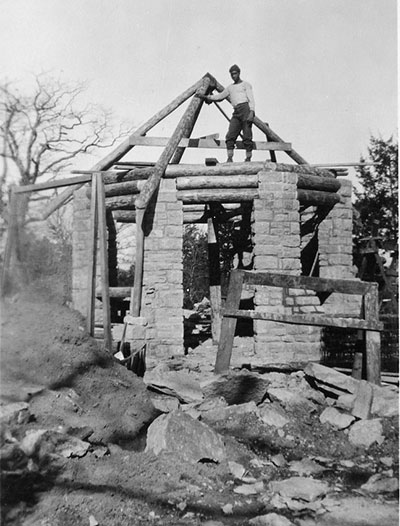 |
|
DID YOU KNOW? In 1985, most of the CCC’s work in the Missouri state park system, including 247 buildings and 95 structures, was included in the National Register of Historic Places. |
Civilian Conservation Corps
In the 1930s, the park system went through its most significant period of change and development. Beginning in 1933, under the direction of President Franklin Roosevelt, U.S. Congress authorized the Civilian Conservation Corps, or CCC.
By 1934, some 4,000 men were employed in Missouri to complete both conservation and construction work in national and state forests and state parks. Projects ranged from construction of dining lodges, picnic shelters, cabins and campgrounds to installation of sewer lines.
State Park Board
In 1937, the management of state parks was separated from the state fish and game department and was placed under the supervision of a new Missouri State Park Board.
The rapidly expanding state park system was soon faced with a critical shortage of funds. To address this need, drafters of the 1945 state constitution included a provision establishing a mill tax, earmarking a portion for state parks. This special provision was approved by voters when they approved the new constitution. In 1960, Missouri voters extended this constitutional provision by a two-to-one majority during a special vote on the mill tax. This special tax for state parks expired in 1972.
In addition to state monies for park purposes, the system drew from federal sources. The state’s receipt of federal funds from the federal revenue sharing program provided a better budget for state parks. Since 1965, the system has sought assistance from the federal Land and Water Conservation Fund to acquire and develop state park lands and facilities.
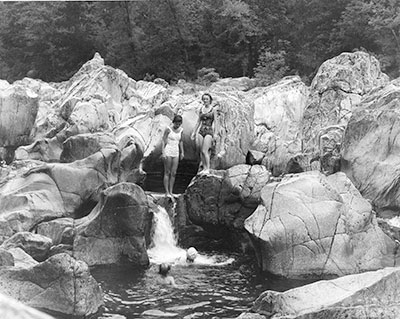 Missouri Department of Natural Resources
Missouri Department of Natural Resources
In 1974, with the reorganization of nearly all state government, the Missouri Department of Natural Resources was created and assumed the state park board’s responsibilities for the administration of the state park system. The size of the system continued to grow and represent the major natural and cultural heritage themes of Missouri while providing Missourians with plenty of recreational opportunities.
As Missouri entered the 1980s, the state’s economy declined. This recession led to reduced state revenues and mandatory cuts in the budget for the state park system. At this same time, federal revenue sharing and Land and Water Conservation Funds also were being greatly reduced. In 1982, Missouri voters approved a $600 million statewide bond issue that included $55 million for major renovation and construction projects in state parks.
|
DID YOU KNOW? The portion of the Parks, Soils and Water Sales Tax that supports state parks averages about $7 a year per Missourian. |
Parks, Soils and Water Sales Tax
In 1984, Missouri voters again showed their support by approving a sales tax to be used for state parks and soil and water conservation efforts in Missouri. Funds from the one-tenth-of-one-percent sales tax are divided equally between the two programs, both of which are administered by the Missouri Department of Natural Resources. In 1988, 1996, 2006 and 2016, the tax was renewed by more than two-thirds majority of Missouri voters.
|
|
|
DID YOU KNOW? Ha Ha Tonka State Park was one of the first sites identified as a potential state park. However, it did not become a part of the park system until 1978. |
With a secure funding base, extensive repair and renovation of the park system can occur as well as the completion of development at newly acquired park areas. Historic structures are being restored, new recreational opportunities added and interpretative exhibits constructed and improved public services provided.
Missouri State Parks Today
Today, the state park system includes 93 state parks and historic sites and more than 150,000 acres of land available to the public. The system includes homes of famous Missourians, Civil War battlefields, and reminders of yesterday such as gristmills and covered bridges. The state’s most outstanding landscapes are preserved for everyone’s enjoyment - deep forests, glades, prairies and blue streams and lakes.
To help visitors enjoy their stay, the system offers more than 2,000 structures, 3,600 campsites, 194 cabins, almost 2,000 picnic sites, and more than 1,000 miles of trail. These trails include opportunities for hikers, backpackers, bicycle riders, off-road vehicle users and horseback riders. The system boasts the longest developed rails-to-trail project in the nation: the 240-mile Katy Trail State Park. Millions of people visit the system annually to hike, camp, fish, discover the past and explore nature.







